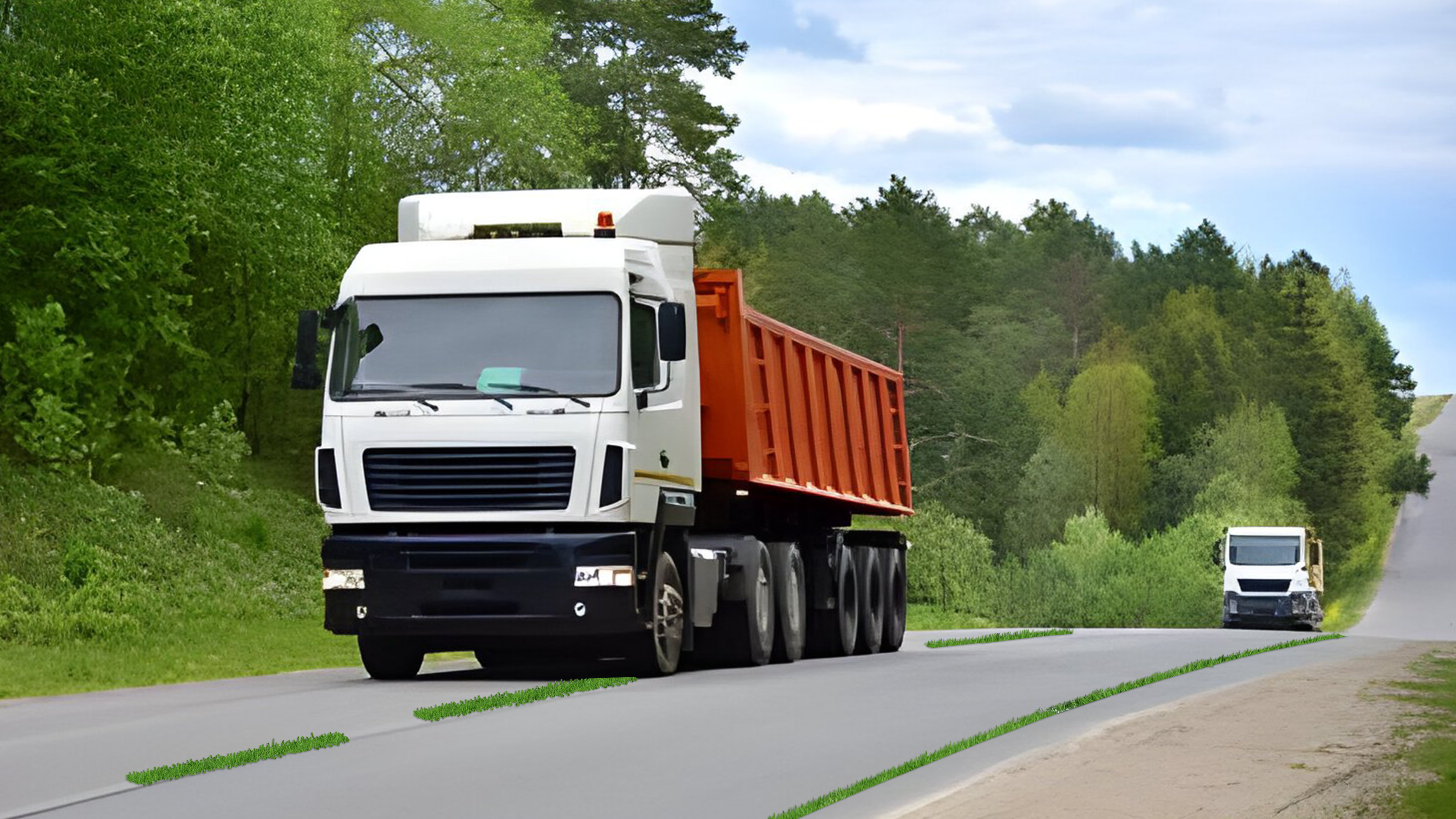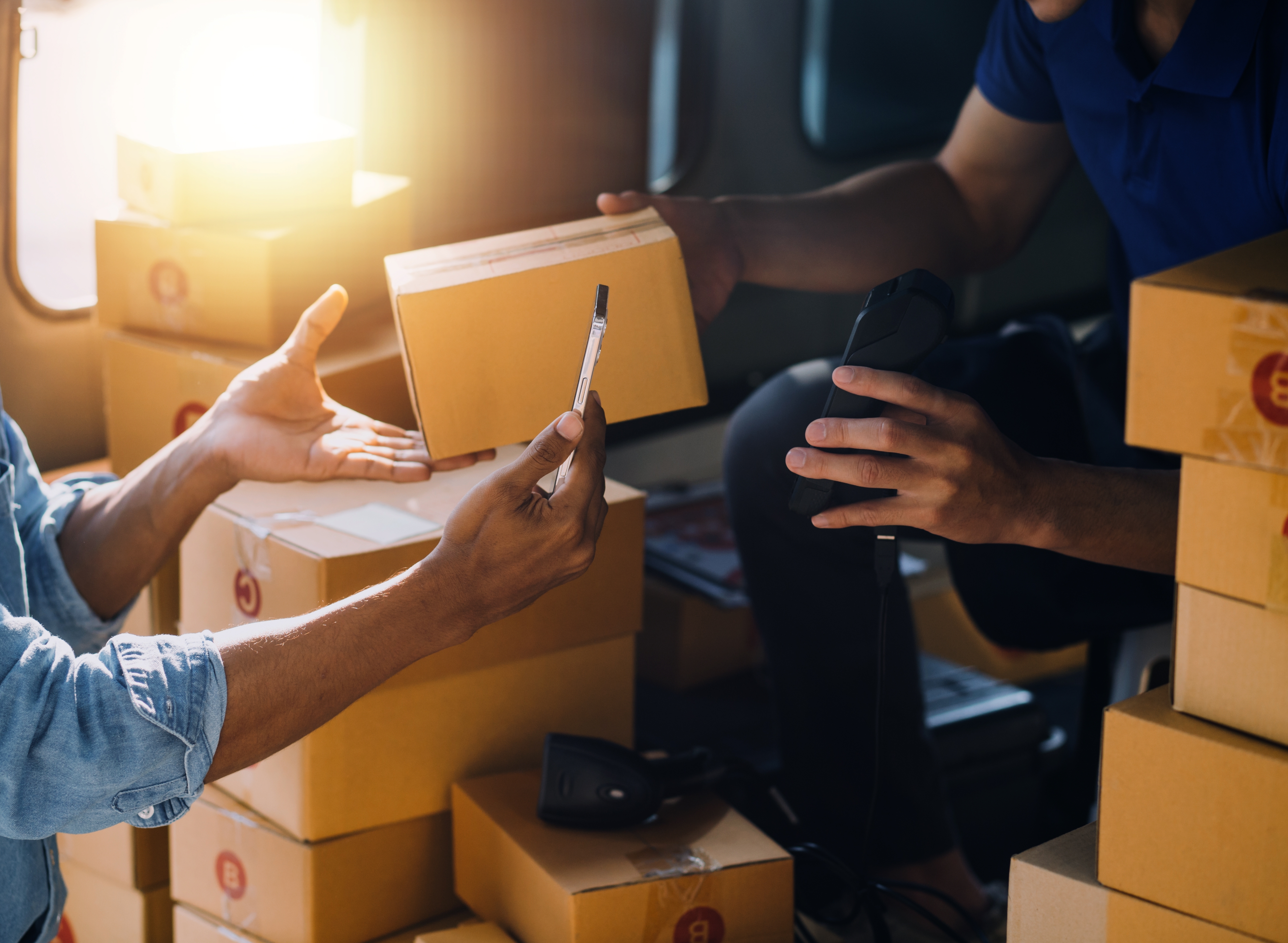This offer is currently only addressed to commercial customers. All prices are exclusive of goods and services tax (GST).
Vaibhav Ajmera
How To Create a Sustainable Logistics Ecosystem?
Vaibhav Ajmera

The importance of logistics as a driver of great change in the world cannot be overstated. It forms the backbone of any established economy and allows companies in extreme corners of the world to trade with each other. This is true for the Indian economy as well, with the freight and logistics market expected to grow 8.8% annually to reach $484.43 billion by 2029.
However, this movement of cargo comes at a cost - specifically to the health of the planet.
In India alone, 90% of transportation CO2 emissions comes from the road sector and a third just from trucks. This is significant when you consider that 4.6 billion tons of freight is moved annually. India is third in the world for CO2 emissions, sliding in just behind China and the USA. The World Bank estimated in 2021 that, without change, global freight emissions could increase by over 60% by 2050.
While there are many contributing factors for this rise in emissions, the logistics industry often takes much of the blame for this. This heightened scrutiny is making it incumbent upon the logistics players to adopt sustainable practices and lead the change.
What is Sustainable Logistics?
The concept of sustainability in logistics is straightforward - it's about making logistics management, freight, and transportation ‘more green’ by adopting environment-friendly practices in the supply chain. It refers to the structuring, processing, and managing of your supply chain activities, which includes supply of raw materials, storage, packaging, distribution, and the end-of-life management of products.
The approach should aim to balance economic, social, and environmental objectives, often referred to as the three pillars of sustainability or the 3 Ps - Planet, People, and Profit. While we’ll be focusing on the environment angle, the others are also pivotal.
- Green or environmental logistics is when industries remain cognizant of the impact of transportation, warehousing, and distribution on the environment, thereby adopting measures to cut down carbon emissions, conserve natural resources, and reduce pollution.
- The social component of sustainability examines factors such as fair labor practices, ethical sourcing of resources and overall community engagement. Social sustainability acknowledges the impact of logistics on communities and aims to improve societal well-being.
- Finally, economic considerations play a strong role in sustainability. This component balances sustainable practices with sound economics. When companies optimize processes, commit to reducing waste, and actively embrace efficiency, it can significantly enhance their bottom line.
Strategies to Start Your Sustainability Plan
A common complaint heard in the logistics industry is that companies want to become sustainable but just don’t know where to start. Here’s a step-by-step process to get you on your way:
Evaluate Your Current Ecosystem: It all starts with understanding where the problems are. Companies need to first measure their carbon footprint, emissions, waste creation, and resource utilization. Do you know the current regulations? Are you violating any of them? Map out your entire supply chain ecosystem, either by yourself or with the help of experts.
Engage Vendors and Stakeholders: You need to establish clear and measurable sustainability goals for your organization, which cannot be accomplished in isolation. Reach out to all stakeholders in your workflow to understand their concerns and the sustainability pain-points which can crop up. This will be important when you’re trying to communicate your sustainability initiatives eventually.
Cost-Benefit Analysis: Understand the different solutions and practices that can be used, through the lens of an economic appraisal. The utilization of green fleet management, efficient distribution channels, renewable energy sources, and eco-friendly packaging materials can be accomplished in a phased manner to ensure the cost-benefit falls in your favor and is viable in the long run.
Deployment of Solutions: Find the right solution and service providers for your sustainability needs, often through platforms like Bosch L.OS, and deploy them according to your set timelines. This could be as simple as starting with route optimization software and slowly progressing to an electric fleet.
Assessment: Create the mechanisms to monitor and analyze which sustainability initiatives have succeeded and those that need tweaks. You can use different metrics, such as carbon footprint, waste reduction, and even energy usage. Keeping a track of global environmental regulations is also an important aspect of this, helping you stay compliant and continuously improving.
While these sustainability efforts can vary in size and ambition, most companies should ensure that they include some, if not all, of these practices.
What are the Core Elements of Sustainable Logistics?
Once you have a blueprint for green logistics ready, you can go deeper into the different elements that will help you become sustainable, such as:
- Fuel Management Systems: Many consider fuel management to be at the heart of sustainable logistics. These can track fuel usage and consumption patterns to provide you with critical data for intervention. There are a host of solutions available fuel, energy, and sustainability on marketplaces like Bosch L.OS, which can reduce your fuel costs and your environmental impact.
- Route Optimization: Identifying the optimal route for your fleet is crucial in reducing fuel consumption and ensuring timely deliveries in a cost-effective manner. You can deploy advanced systems that help you plan routes based on potholes, speedbumps, weather conditions, and overall road infrastructure – all reducing your carbon footprint. Explore some of these routing and parking solutions.
- Fleet Management and Modernization: This can imply different things for different needs - maybe adding the latest software, or telematics sensors, or completely shifting to Electric Vehicles (EV). We’re already seeing a shift in India towards 3-wheeler electric commercial vehicles (ECV), which is clearly reducing maintenance and fuel costs while cutting the carbon footprint. Sensors are also allowing fleet operators to keep a track of the driving behavior, fuel consumption patterns, and providing supply chain visibility.
- Multimodal Shipping: Utilizing a mix of transport modes allows fleet operators to optimize their carbon footprint. You can shift your cargo from EVs to rail infrastructure back to EVs for last mile delivery. Leverage transportation management tools to craft transport strategies that extract the perfect balance of emissions and cost.
- Automating Warehouse Management: Digitizing your warehouse through advanced inventory management systems can significantly reduce wastage and resource utilization. Space optimization becomes a key factor, with low energy consumption methods reducing your environmental impact. However, integrating these systems can come at a higher cost.
- Telematics Hardware and IoT Sensors: Tracking and monitoring your fleet is the key to reducing unnecessary idling, driver management, streamlining routes, and predicting vehicle breakdown – all fundamental aspects of reducing your emissions. Fleet management systems, like those provided on the Bosch L.OS, can help you keep an eye on all these disparate activities.
- Choosing Sustainable Suppliers and Vendors: You might shift to sustainable practices, but that won’t have an impact if your suppliers and vendors aren’t following along. Selecting the right vendors can not only help you meet your goals, but it might even get you there faster. You can keep a track of this through unified dashboards that help you stay compliant.
- Staying Updated with Regulations: Logistics companies should be aware of all the sustainability regulations, acts, incentives, and policies that can impact their ecosystem. New tech systems can help you keep a track of any updates and stay compliant with these directives. In India, the National Logistics Policy, The Energy Conservation Act 2022, the Business Responsibility and Sustainability Reporting guidelines, all have a significant impact on logistics operations.
The Benefits of Sustainable Logistics
You might be forgiven for thinking this is too expensive or tedious to accomplish. Maybe you want to push it off. But there are a host of benefits for companies that you should be aware of:
- Reduced greenhouse gas emissions and carbon footprint
- Improved operational efficiency
- Considerably lower costs in the long term
- Easier recruitment with younger generations
- Compliance with emerging regulations
- Attractive to international business partners
- Long-term resilience and profitability
- Increased brand value and reputation
And while challenges in terms of implementation and regulations remain, it’s looking imperative for all stakeholders in the ecosystem to make their move towards sustainable logistics.
The Future of Logistics
Transparency and Accountability.
That’s the writing on the wall for many logistics companies. They’re realizing that to stay competitive in the global marketplace, they need to stay ahead of the regulations and expectations. Electric and bio-fuel vehicles are picking up, tracking systems are improving, and overall obstacles to adoption are falling away.
Scrutiny of the entire supply chain is most likely going to increase over the next decade, with end-consumers asking for more transparency on how their products are sourced – which includes logistics. Reporting and disclosure will become a key part of companies, which is already being seen with big players like Apple.
In order to create a path to sustainability, logistics companies must find the right collaborators and solution providers. Finetune your requirements and leverage curated marketplaces like Bosch L.OS to identify the ideal partner. This can help expedite your shift towards becoming a sustainable powerhouse in the logistics sector.
Still unsure about sustainable logistics? Speak to our experts.


